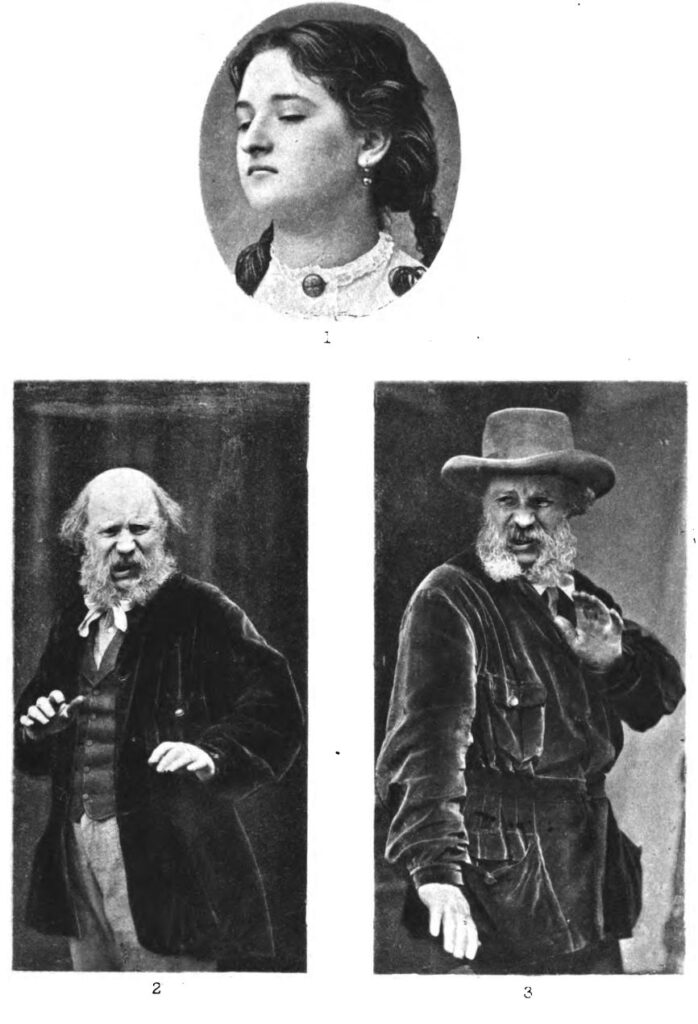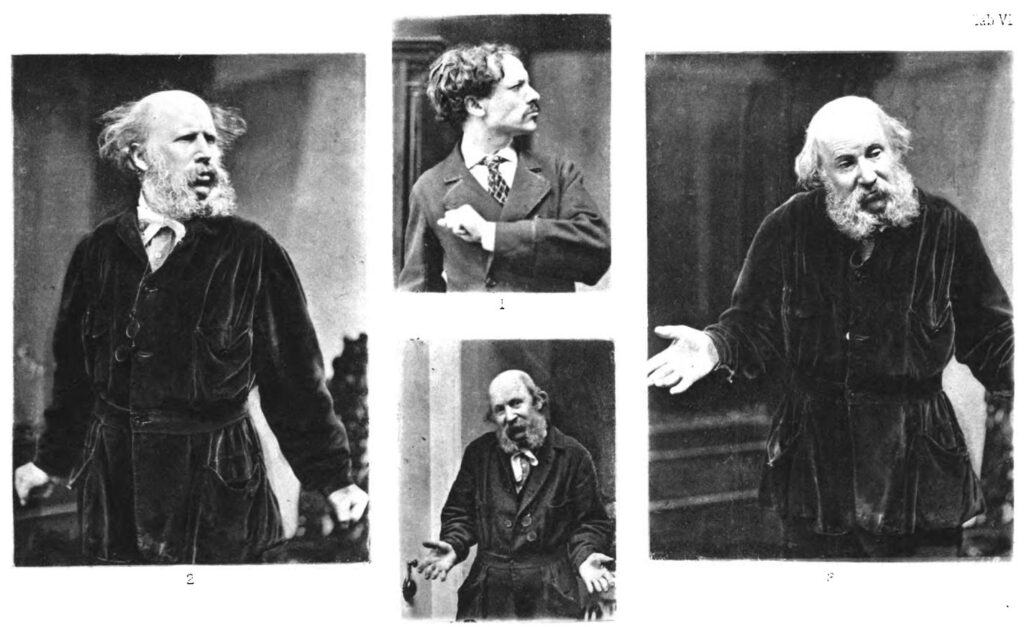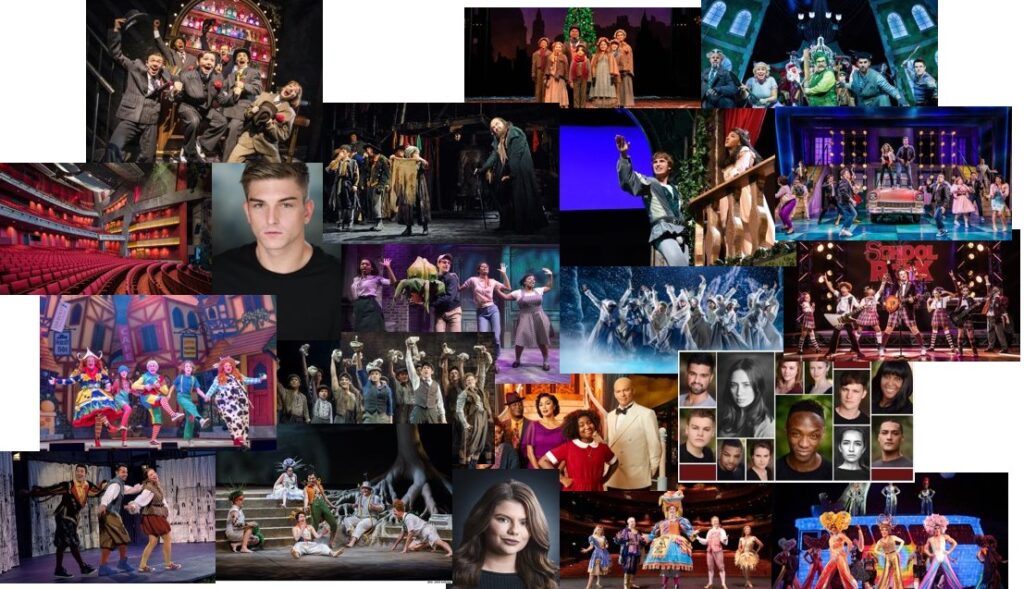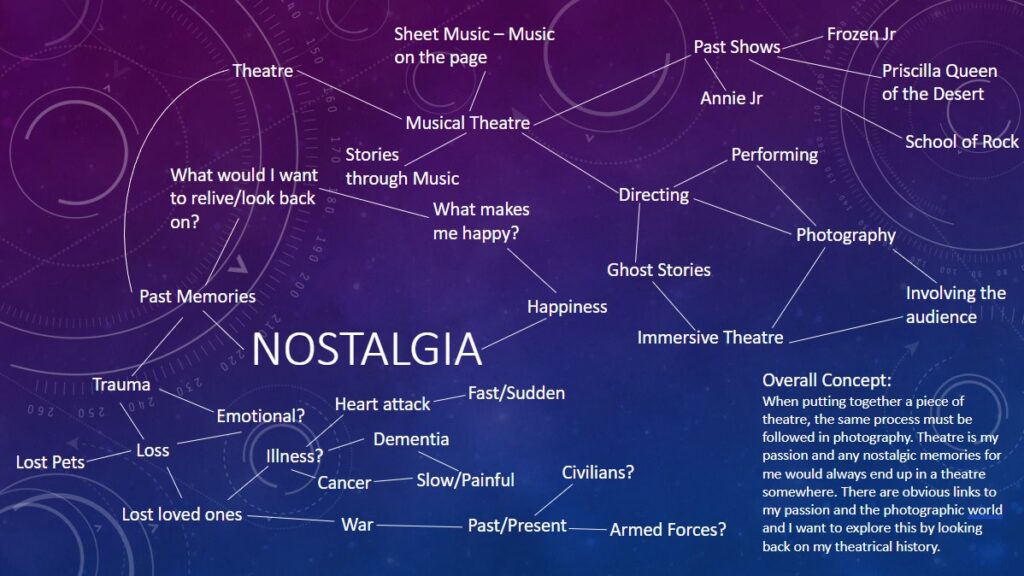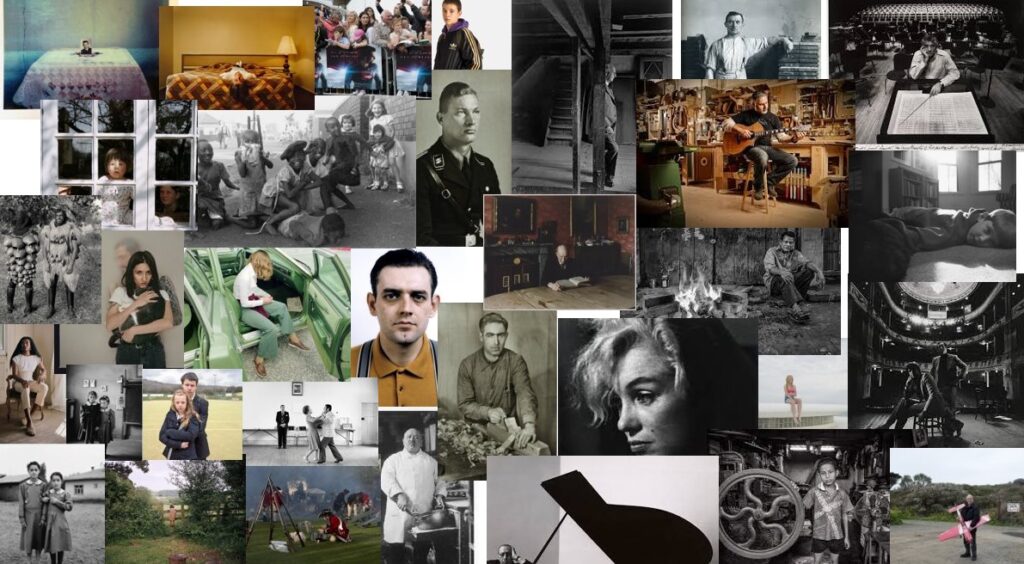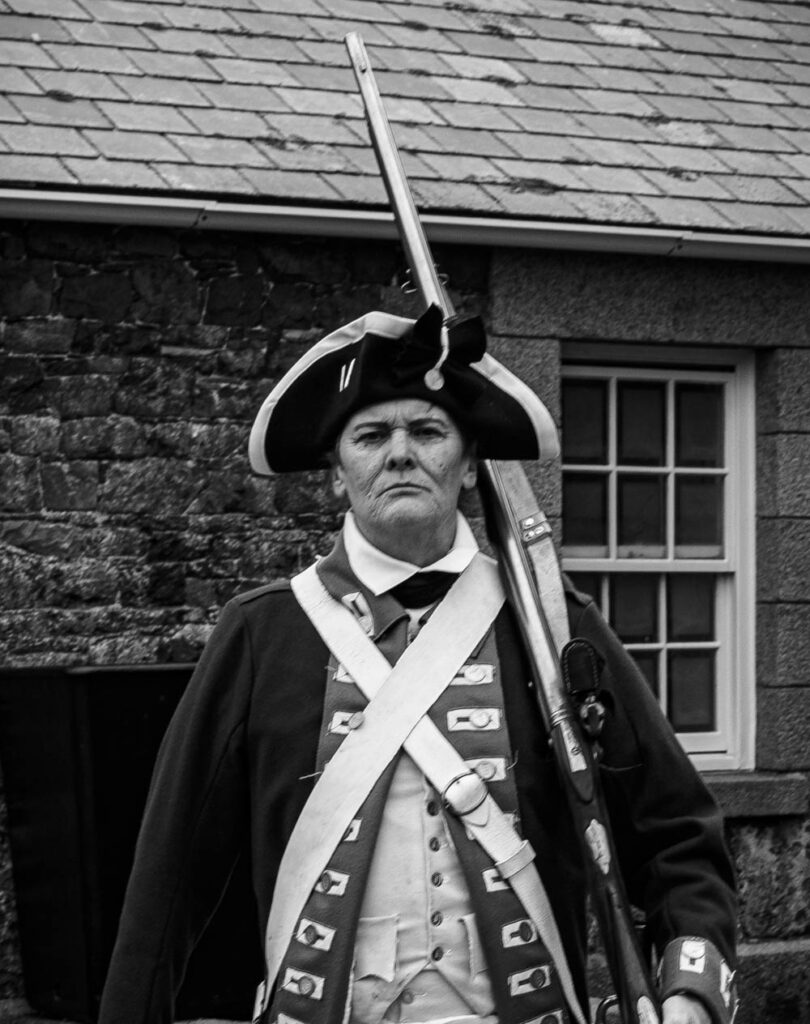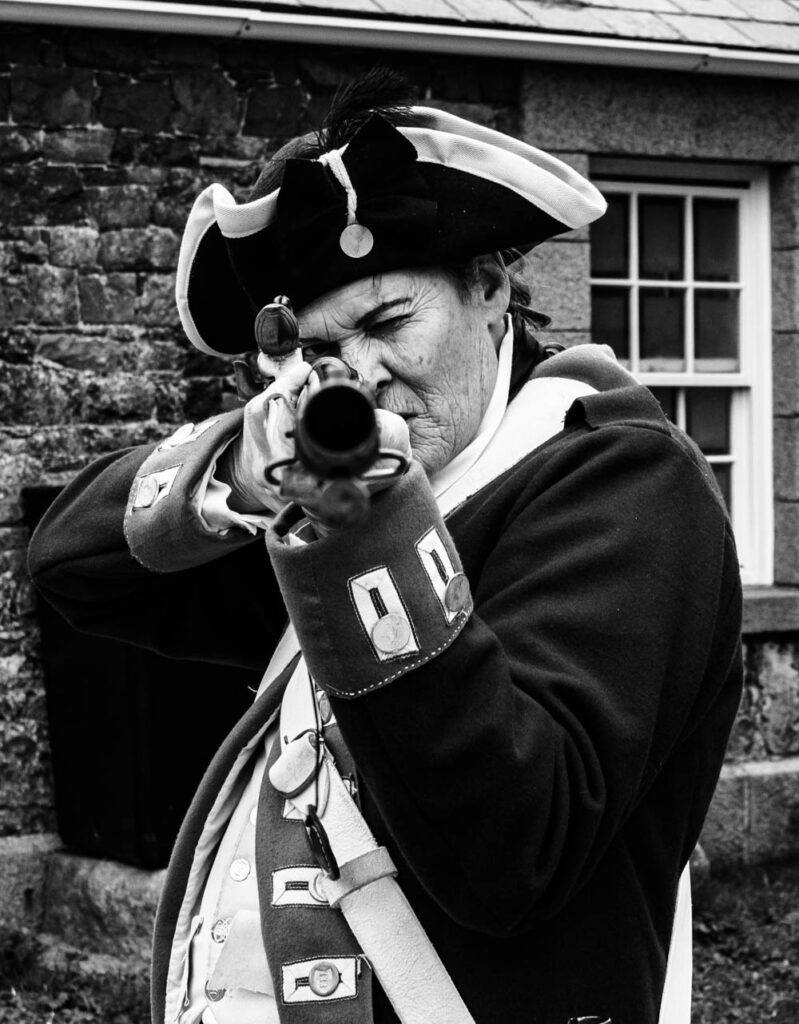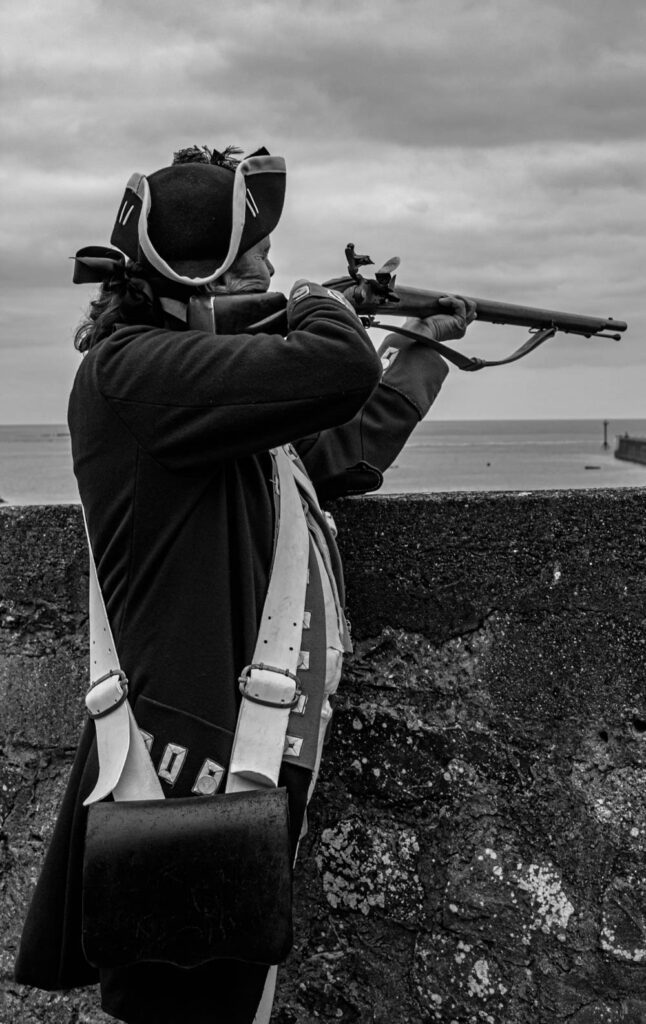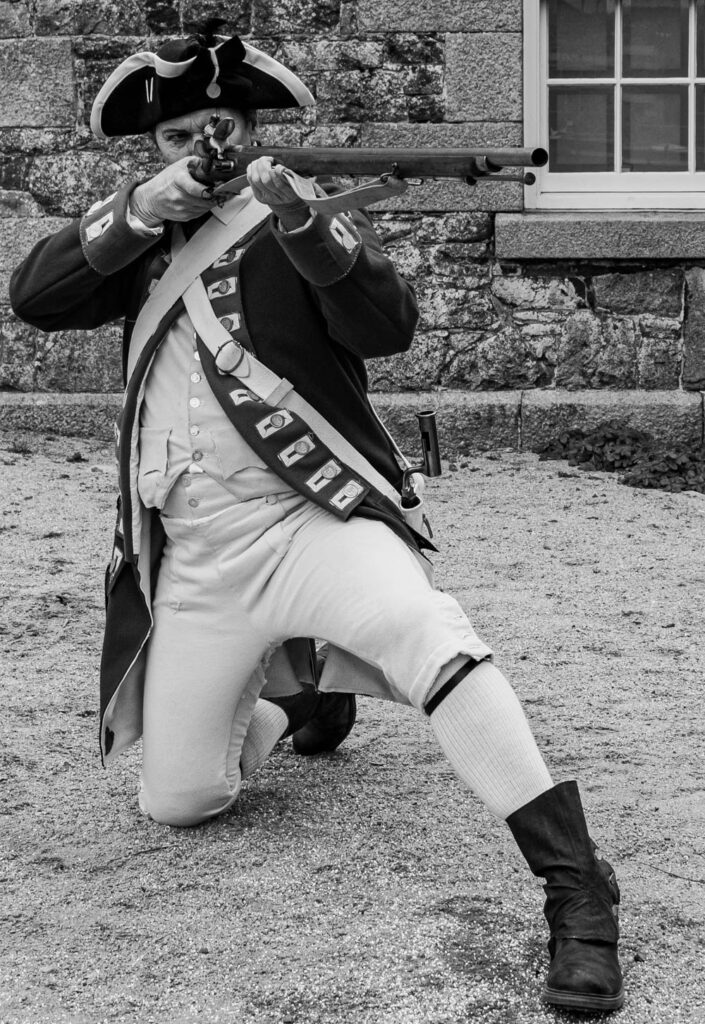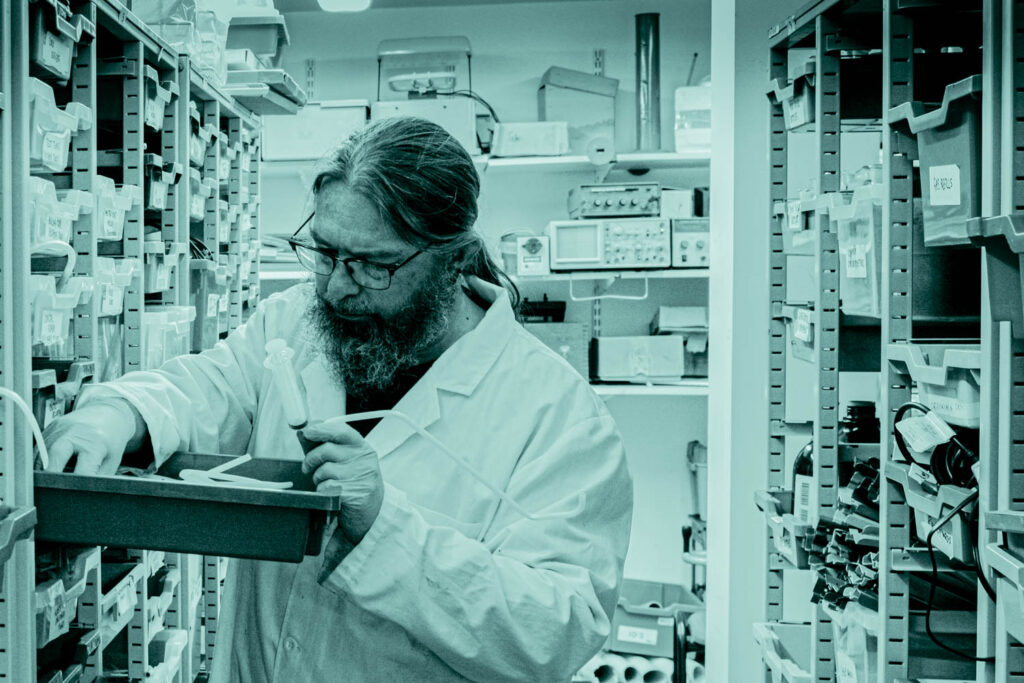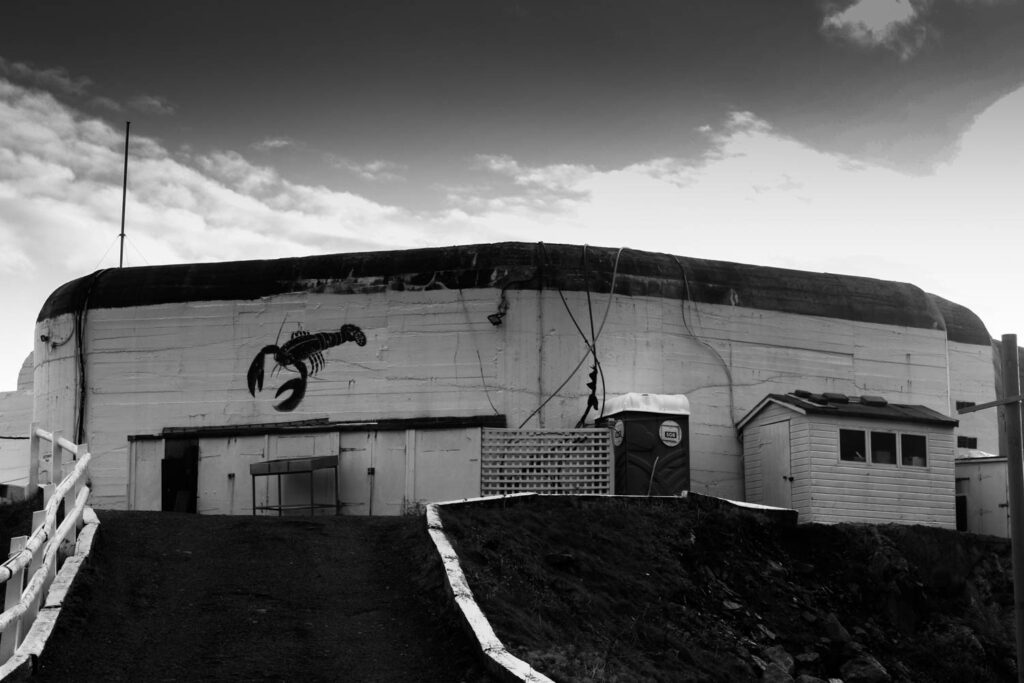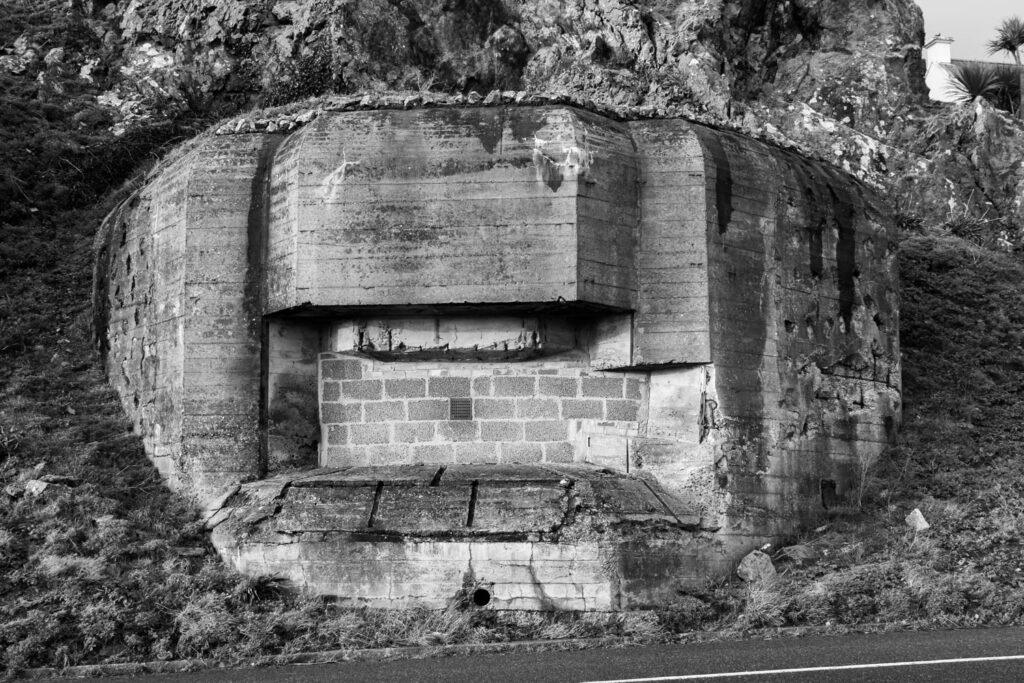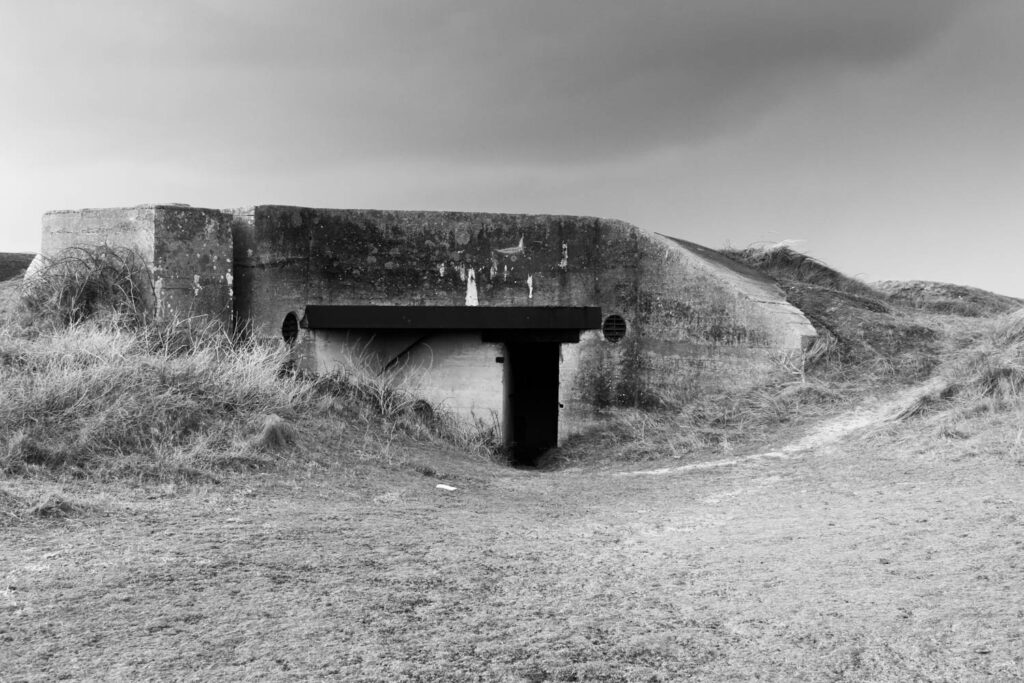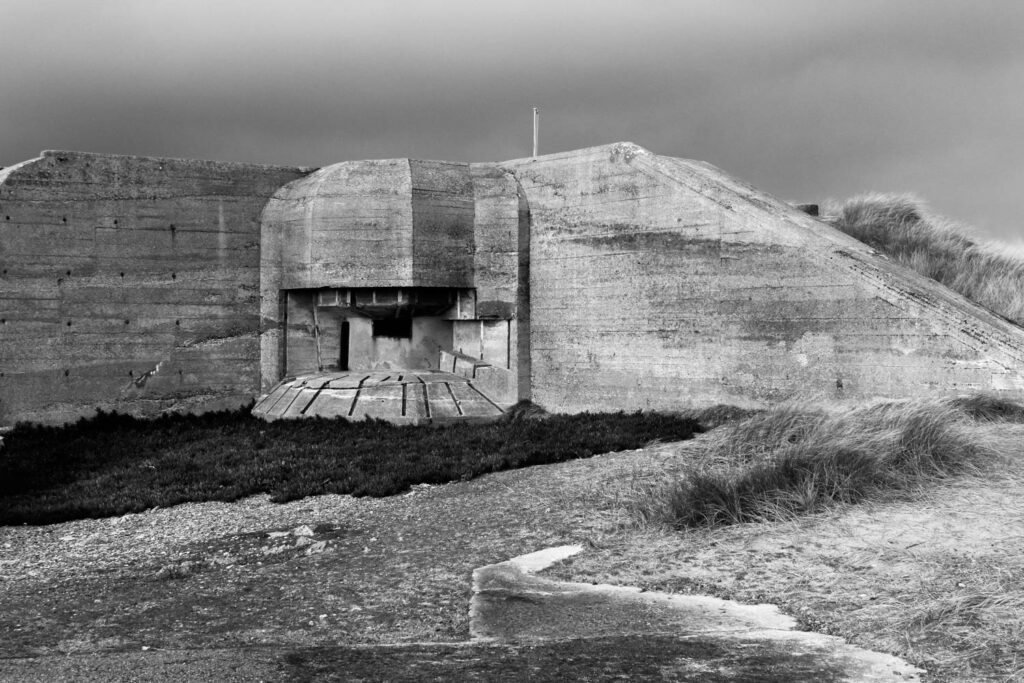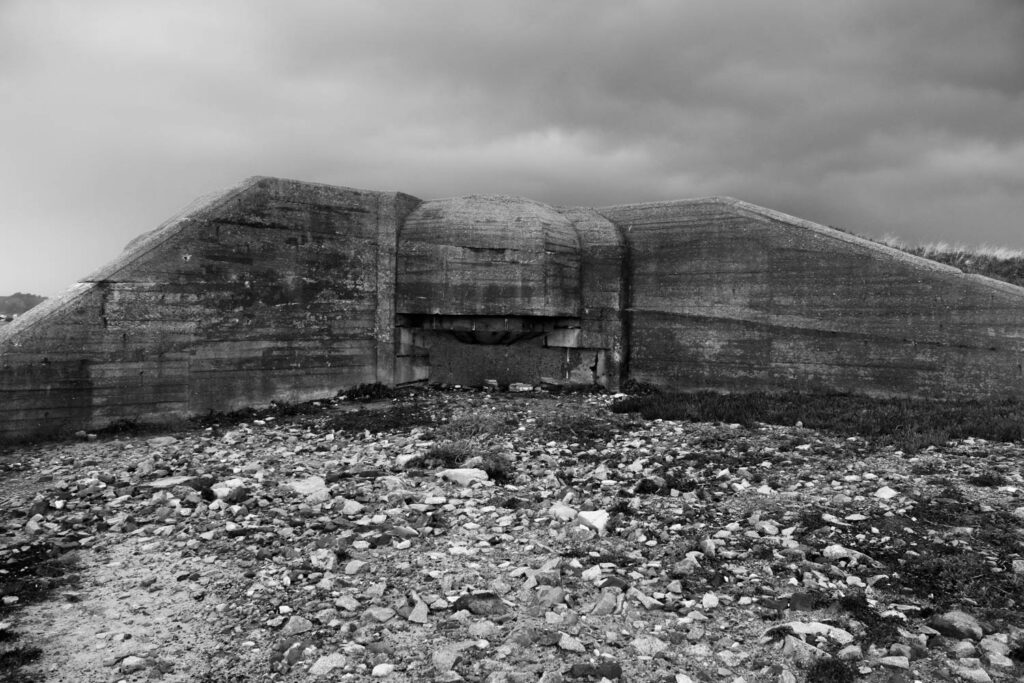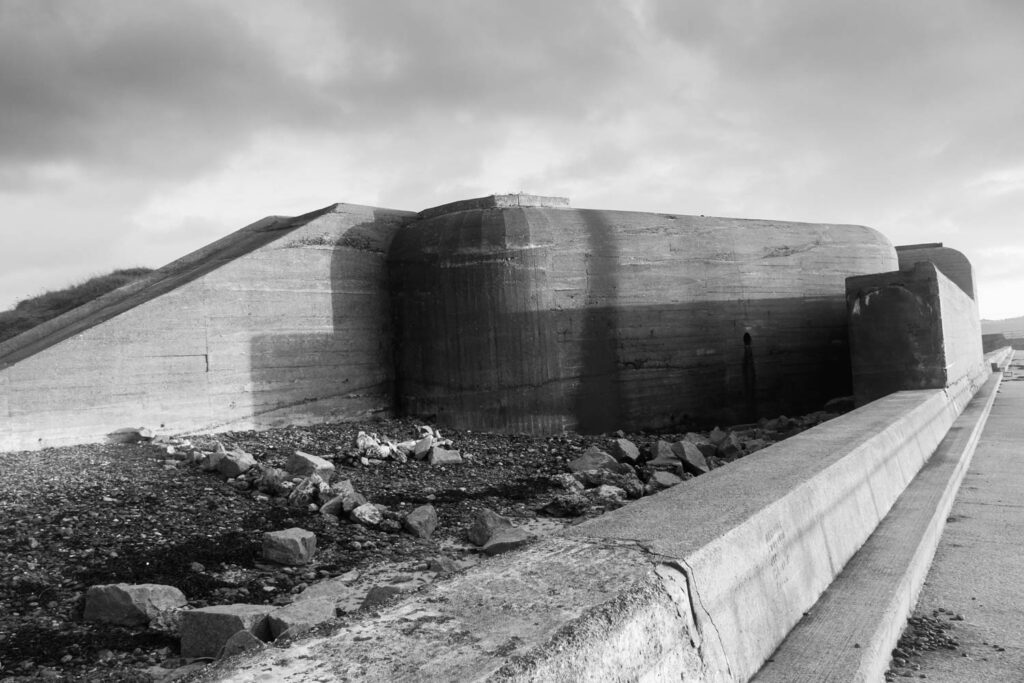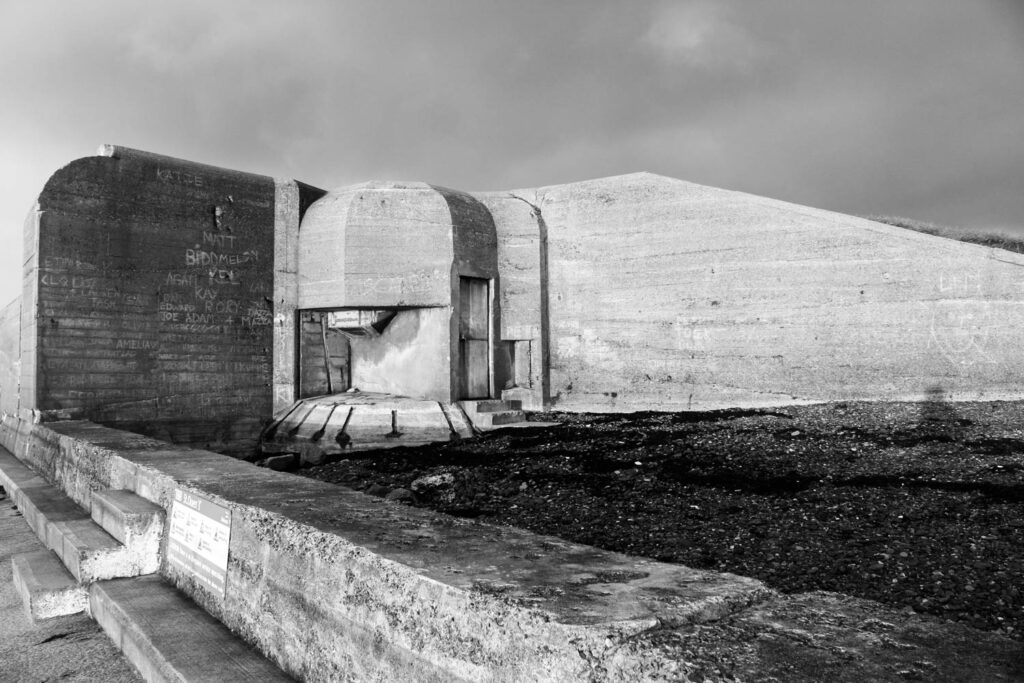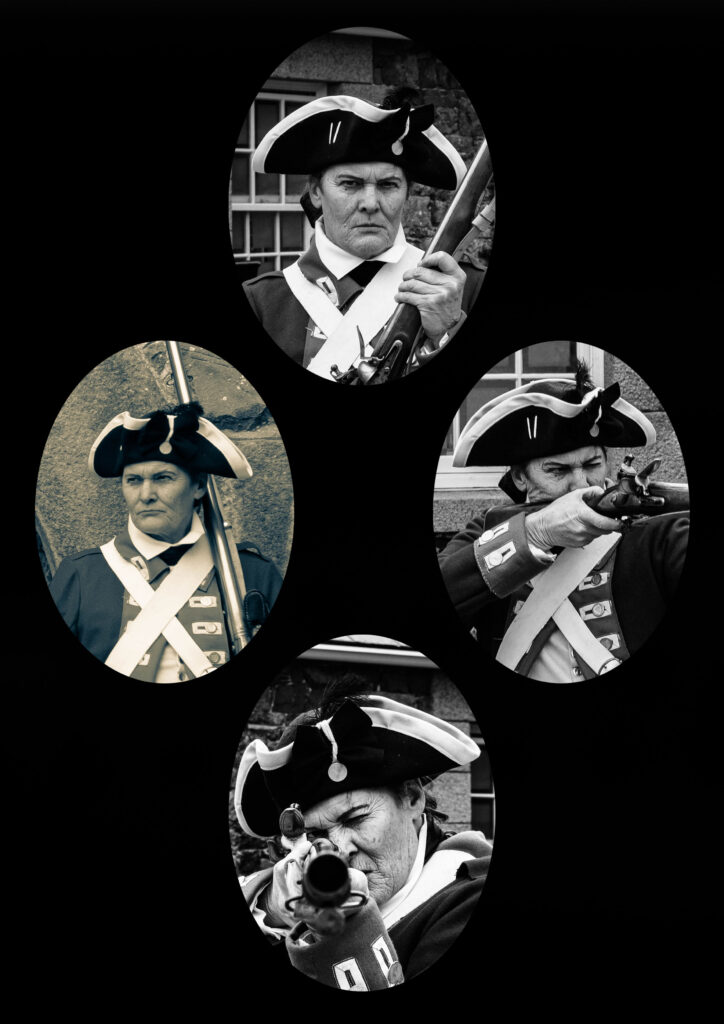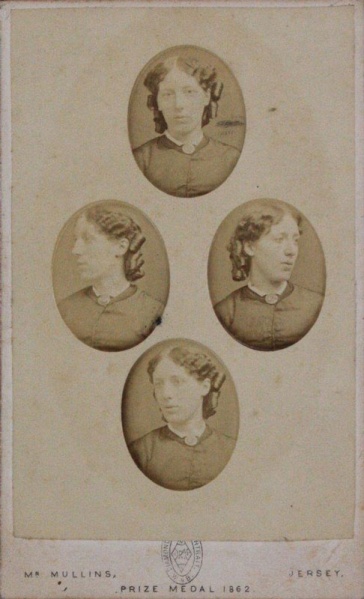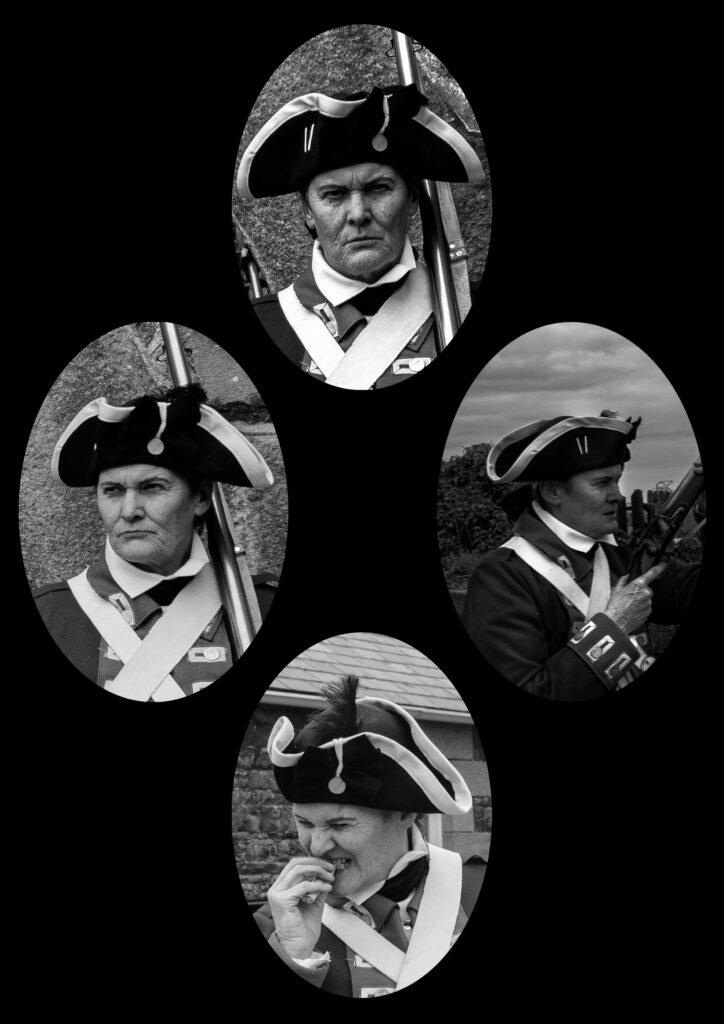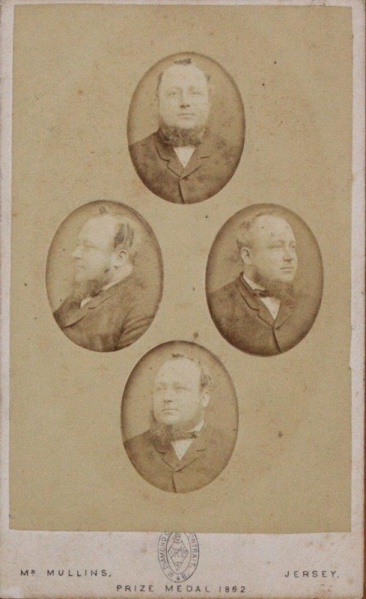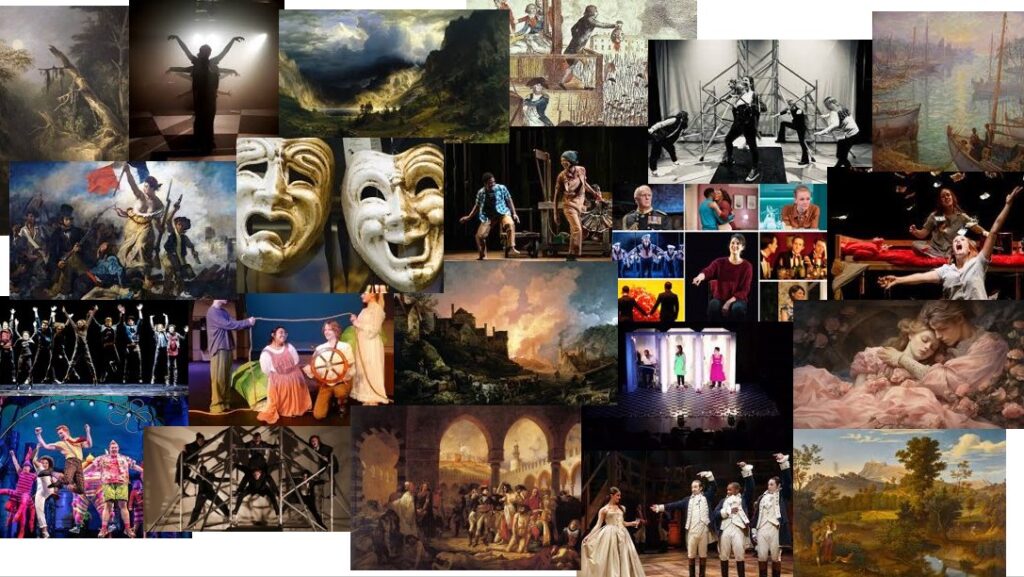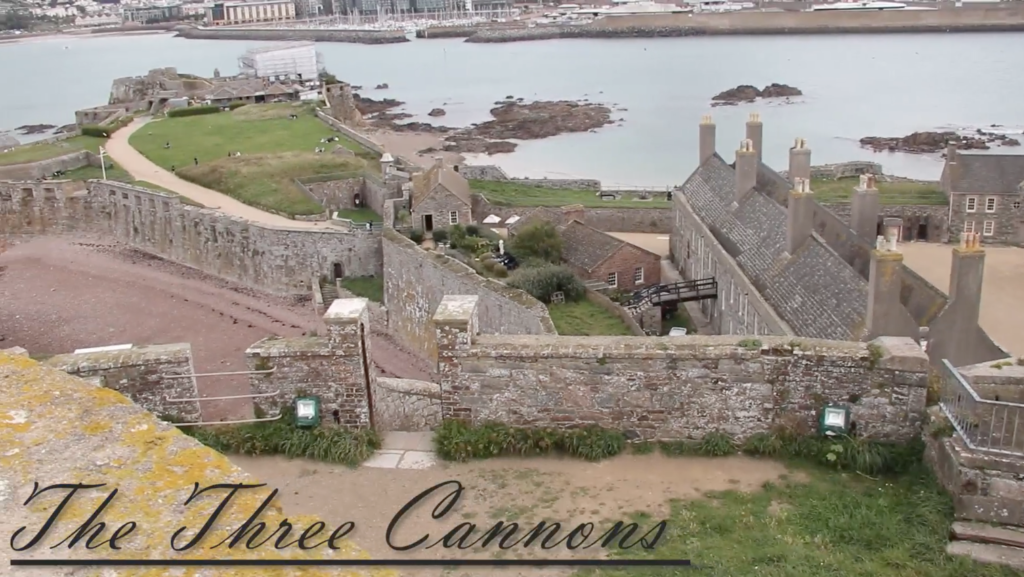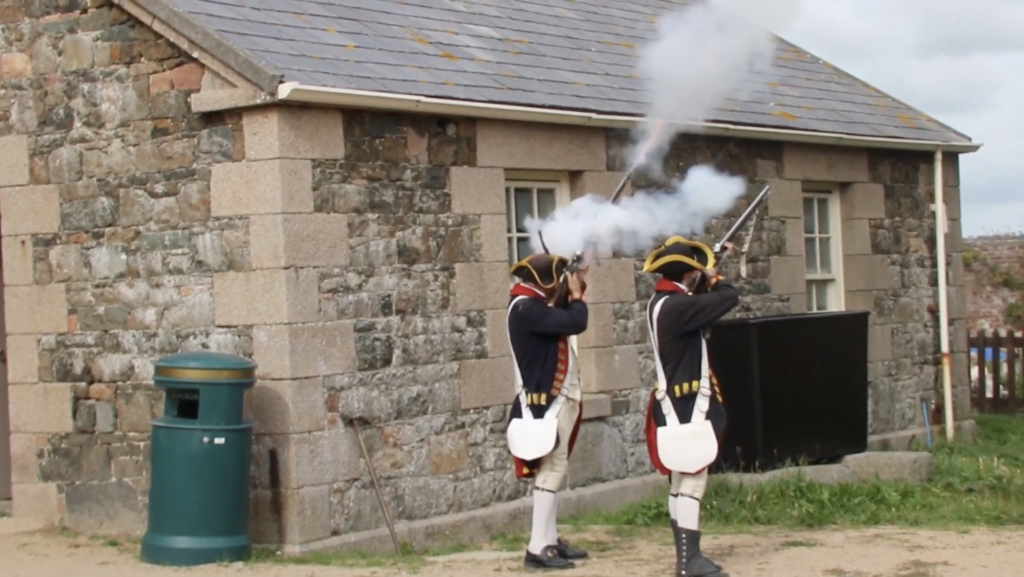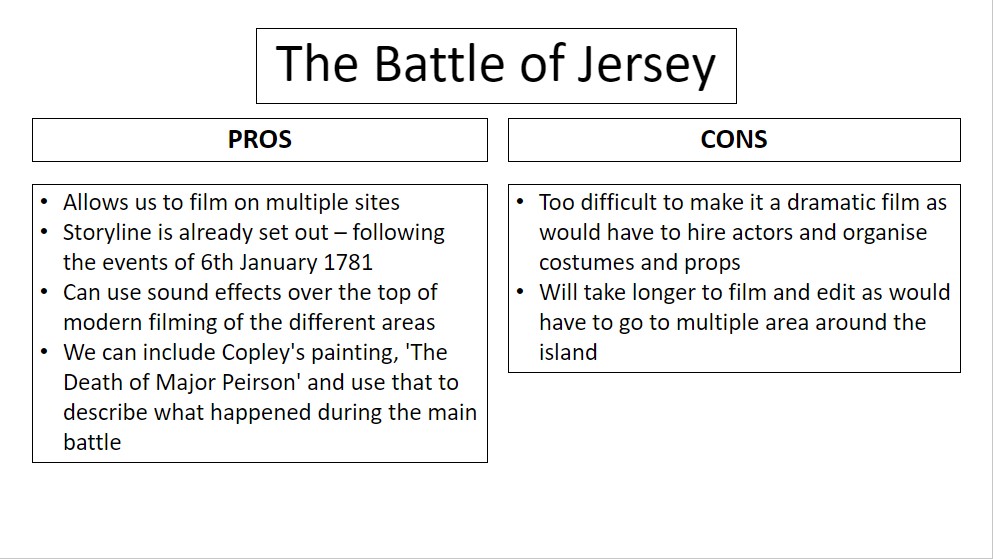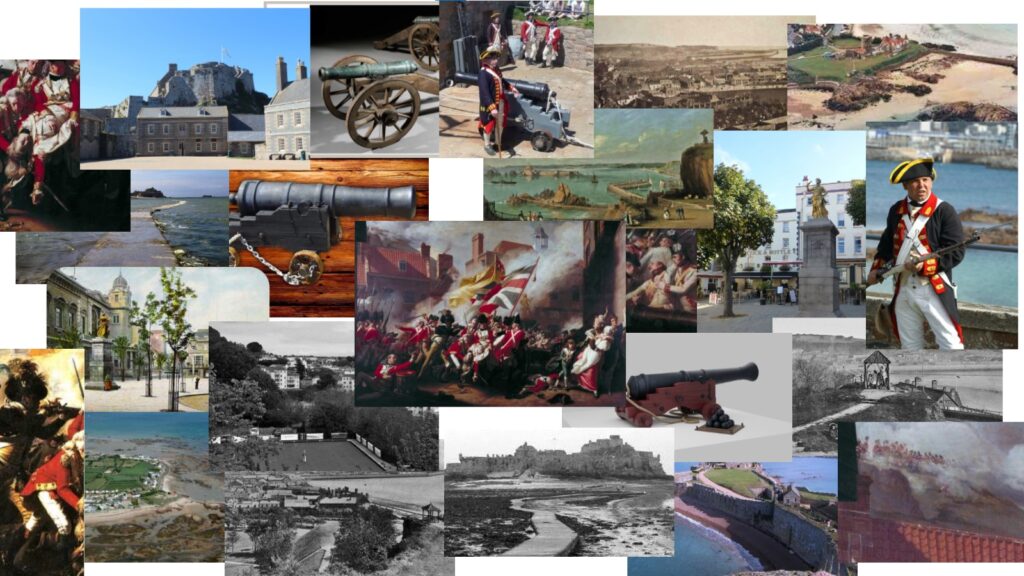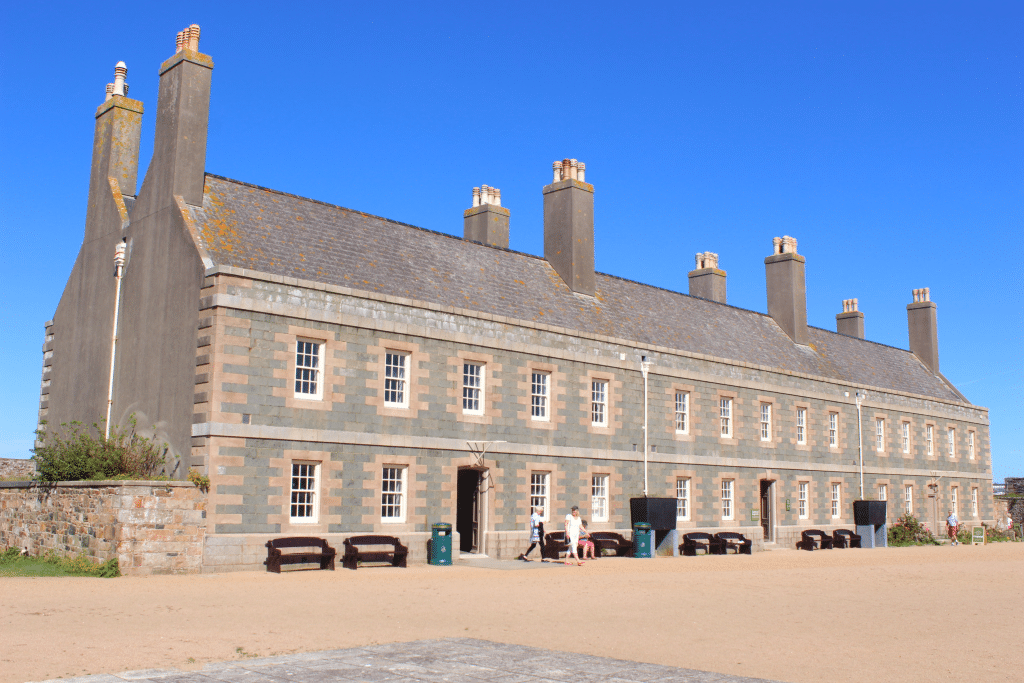Gunners at Elizabeth Castle were known as invalids – men that were injured or too old to fight on campaign in the colonies. But as a gunner they have an extensive skill set that “Red Coat” infantry don’t have. Their knowledge and skill when firing cannon means that they can be put into a garrison and teach new recruits that could then join the colonial wars of the British Empire.
When you become a gunner, your wage doubles, you get a pension and three meals a day for the rest of your life. But your life expectancy drops significantly. It is the role of the Master Gunner (modern day Artillery Staff Sergeant) to train the new recruits to fight for their country and if needs be defend the castle from any potential invasion force.
Their uniform is royal blue, which is a more expensive dye and shows them as the elite in the British Army. A blue coat with red turn backs and gold lace clearly shows them as artillery men on the battlefield. Their buttons are unique and bear the insignia of the Royal Armouries – to the normal person it just shows them as gunners, but it serves as a reminder to the armouries of an embarrassing event that they have been forced to be reminded of always.
The insignia shows three cannons with three oversized cannon balls. This is not simply a nice design, it reminds the Armouries of the battle where they supplied cannon balls that were too big to fit down the barrels of the guns.
Although they are cannon men, they would deploy the musket when on guard duty. They would never carry more than nine rounds of ammunition and they only reason the musket will go off is if they see sails on the horizon. Instead of attempting to shout across the castle, they would fire the musket into the air to alert the entire garrison and call them to their duties. It was an early warning system.
In the event of an invasion force attacking the island, the gunners would man their cannons and employ the help of the infantry, at least one gunner per gun to aim and fire. The infantry would run the movements of worming, swabbing, loading and priming the cannon.
STEP 1: WORM THE CANNON
The first man holding the worm, a long pole with a double-cork-screw attached, approaches the cannon and puts the worm in. There is a black mark on the worm that should align with the end of the barrel if it is empty. If the line protrudes from the end of the cannon, stop the process and flood the gun. If it does not stick out, proceed to twist the worm clockwise and grip any paper left from the previous charge. Withdraw the worm while scraping the bottom of the barrel. Continue this process until no remnants get pulled out.
STEP 2: SWAB THE CANNON
The next man holding the swab, a wooden pole wrapped with dampened sheets fleece. The push and pull the swab in and out of the cannon repeatedly – this motion cools the cannon and extinguishes any burning embers left from the previous charge. However, the vent is unable to be swabbed as it is too small, and the swabbing action draws in air from outside the cannon. If there were any burning embers they would be continually resupplied with oxygen.
Therefore, we have another man as the vents man. His role is to place his finger over the vent to create a seal so that the swabbing action creates a vacuum within the barrel of the gun.
The swab is removed and the vents man removes his finger, the vent is then covered by a leather sleeve.
STEP 3: LOAD THE CANNON
A paper charge of gunpowder is brought from the magazine to the battery and placed in the end of the gun. The amount of gun powder is proportional to the weight of shot from the cannon; eg. if the shot weighs 6lbs, we need 2lbs of gunpowder. The charge is placed at the end of the barrel and a fourth man approaches the gun with the rammer, a long wooden pole. He rams the charge to the breech of the gun a compacts the charge as compression is what makes gunpowder explode.
The cannon ball would then be rolled into the barrel and pushed on top of the charge with some cloth to hold hold it in place and seal any gaps.
STEP 4: SET AND PRIME THE CANNON
The cannon is then pulled to its firing position by a pulley system of ropes.
Once in position the gunner will pierce the charge with a brass pin and fill the vent with thinner gunpowder known as priming powder. The gun is now ready to fire.
STEP 5: FIRE THE CANNON
As the flintlock mechanism was not yet installed on cannons, the gunner would use a linstock. This was a wooden stick with brass and copper fittings and rope treated with potassium-nitrate (saltpetre). This rope will now burn at a rate of 1 inch every 20 minutes without a flame ensuring a safe way of firing the cannon. It is known as slow match. The gunner would run to a nearby hurricane lantern to light the slow match and return to his position, and, when given the order touch the priming powder with the slow match to fire the gun. In accordance with Newton’s first law of physics, the force of the cannon ball being pushed out of the barrel of the gun would send the cannon backwards about 6ft.
The cannons were also very poorly cast when made and often had air bubbles inside them, meaning that at any point during the firing process the cannon could explode killing its gun crew.
The musket used in the 18th Century was known as the ‘Brown Bess’. A flintlock musket so named as it is a steel tube with a piece of flint on a lock – hence flintlock-musket.
STEP 1: HANDLE CARTRIDGE
First pull the flint back to what is known as the ‘half cock’. The lock is on a double ratchet mechanism so that when the hammer is pulled to half cock, the trigger will not work.
When in the battle lines, men a squashed tightly together so in order to get a cartridge from the cartridge box, they must draw a large circle with their arm to get to the box at the back of their person.
They take out a cartridge and bring to their mouth. As they have the musket held in their left hand and the cartridge in their right, the safest way of opening it is to use their teeth.
STEP 2: PRIME YOUR MUSKET
The gunner will bite the tab off the paper cartridge, spit it out and pour about one gram of gunpowder into the priming pan. Immediately close the pan cover (frizzen) to prevent the priming to be blown away or lost for any reason.
STEP 3: LOAD YOUR MUSKET
Invert the musket so that the muzzle is at the top and the lock is facing outwards. Empty the cartridge into the musket and push the paper in as well. The musket ball would be tied in on the end of the cartridge and the paper provides wadding and adds compression. It also prevents the musket ball from rolling out of the barrel.
STEP 4: RAM YOUR MUSKET
You then deploy the ramrod from under the musket and throw it down the barrel. Use it to hit the cartridge at least three times which is more than enough compression to put the musket ball through a solid oak door that’s five inches thick from about 100 yards. Remove the ramrod and place back under the musket. You are now loaded and ready to fire.
STEP 5: FIRE
Hold up the musket to the poised position and pull the hammer to the fully cocked position.
Take aim.
FIRE – pull the trigger and hope it works
A musket will fail at rate of 30% and this could be for an range of reasons. The frizzen could be too shallow, or it might not spring out of the way fast enough. The hammer could be moving to slow. The powder could be wet or it could have been blown away.
HOW DID THEY LIVE?
The garrison worked on a hot bed system, three men to a bed. One will be resting while another is on guard duty and a third is training. They will rotate so that they have 8 hours doing something every 24 hours, there will always be men guarding the walls. In the main barracks, there would be 300 men living in that building whereas the officers’ barracks housed 12 officers minus the captain who stayed in the Captain’s House.
A GUNNER’S TYPICAL DAY
A gunner would wake up and do drill for six hours at least every day, clean his musket to ensure it is always functional in any weather condition, practice firing the cannon and aiming at rocks out in the sea. The British were the only European army that could train with live ammunition so when it comes fighting they would have the better accuracy on the field. The gunner would then spend eight hours on guard duty before returning to his bed which would still be warm from the previous man, hence the term ‘hot bed’. Soldiers would often sleep with their muskets so they would always be ready to defend the island, and also have the knowledge that no one will have tampered with it.


